Key takeaways
- Activist teacher resources empower educators to inspire critical thinking and challenge inequalities through meaningful classroom engagement.
- Selecting effective remote learning technologies requires balancing ease of use with meaningful student engagement to promote reflection and dialogue.
- Integrating tech tools with activist practices can amplify marginalized voices and foster collaborative movements among students.
- Challenges like inconsistent internet access and screen fatigue highlight the need for flexibility and accessibility in remote learning environments.

Understanding Activist Teacher Resources
Activist teacher resources go beyond traditional lesson plans; they are tools and materials designed to empower educators to challenge inequalities and inspire critical thinking. When I first started exploring these resources, I felt a mix of excitement and responsibility—knowing that what I brought into my classroom could spark real change made every lesson more meaningful. Have you ever wondered how a simple worksheet or digital tool can become a catalyst for social awareness?
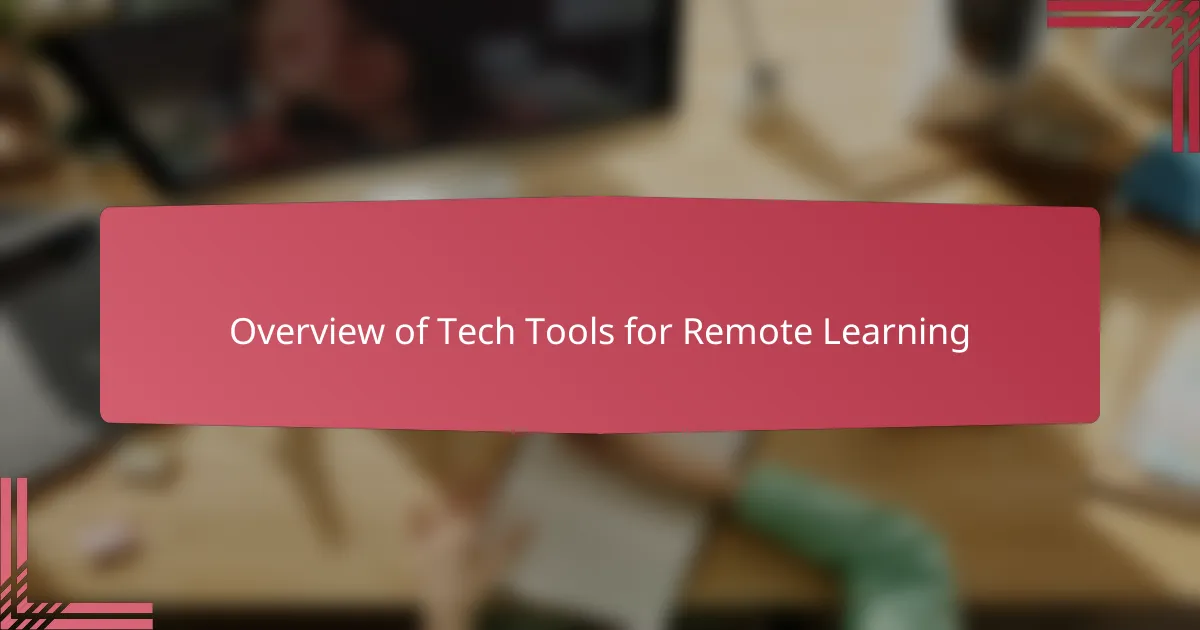
Overview of Tech Tools for Remote Learning
When I first transitioned to remote learning, I quickly realized that tech tools weren’t just conveniences—they were lifelines. Platforms like Zoom and Google Classroom became more than apps; they were spaces where connections could still happen despite physical distance. Have you noticed how these tools can either widen or bridge the gap between students and teachers, depending on how we use them?
I remember feeling overwhelmed by the sheer number of tools available. There were collaborative apps like Padlet and Jamboard, offering creative outlets for student voices, which felt especially crucial for activist teaching. These tools didn’t just transmit information; they invited participation and dialogue, turning a virtual space into a dynamic classroom.
What that experience taught me is that tech tools for remote learning are only as powerful as the intentions behind them. When we use them thoughtfully, they support not just academic growth but also critical consciousness. Isn’t that what we, as activist educators, ultimately strive for?
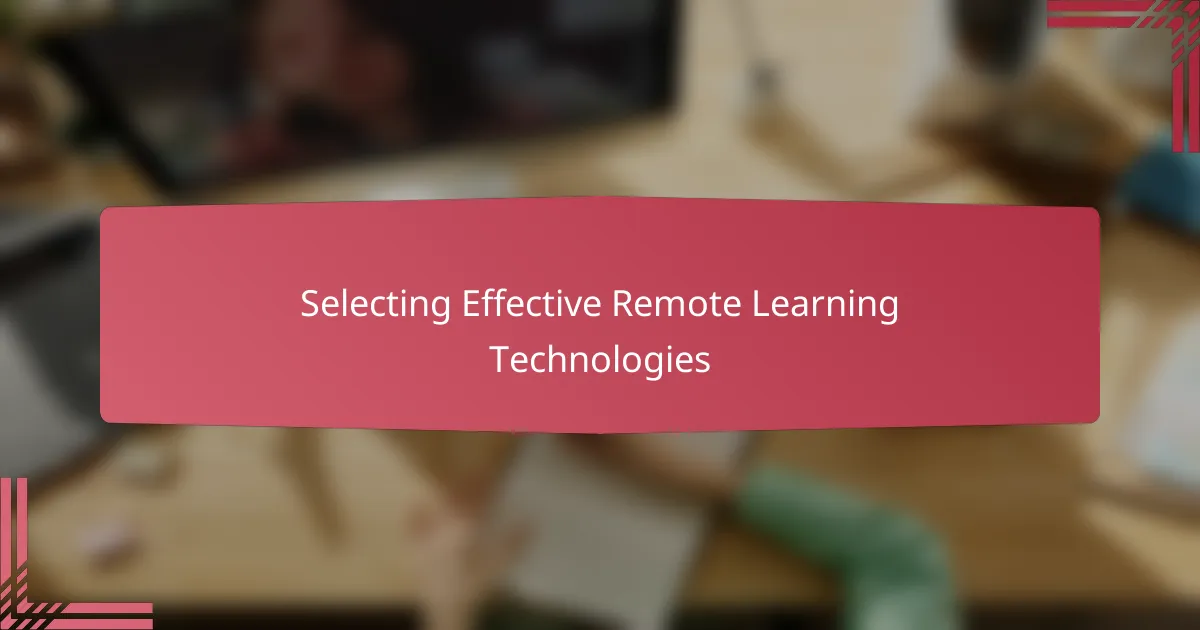
Selecting Effective Remote Learning Technologies
Choosing the right remote learning technology felt like navigating a maze at first. I learned quickly that it wasn’t about picking the flashiest app but finding tools that matched my students’ needs and my teaching goals. Have you ever struggled to find a platform that balances ease of use with meaningful engagement?
One tool that stood out for me was a simple discussion forum that allowed students to voice their thoughts outside of live sessions. It reminded me that sometimes the most effective technologies are those that create space for reflection and dialogue, not just quick answers. How often do we consider whether the tech we use truly amplifies student voices?
In my experience, flexibility and accessibility became the real game-changers. Tools that worked across devices and didn’t require high bandwidth made a huge difference, especially for students with limited internet access. Isn’t it our responsibility as educators to ensure that remote learning tools don’t unintentionally exclude anyone?
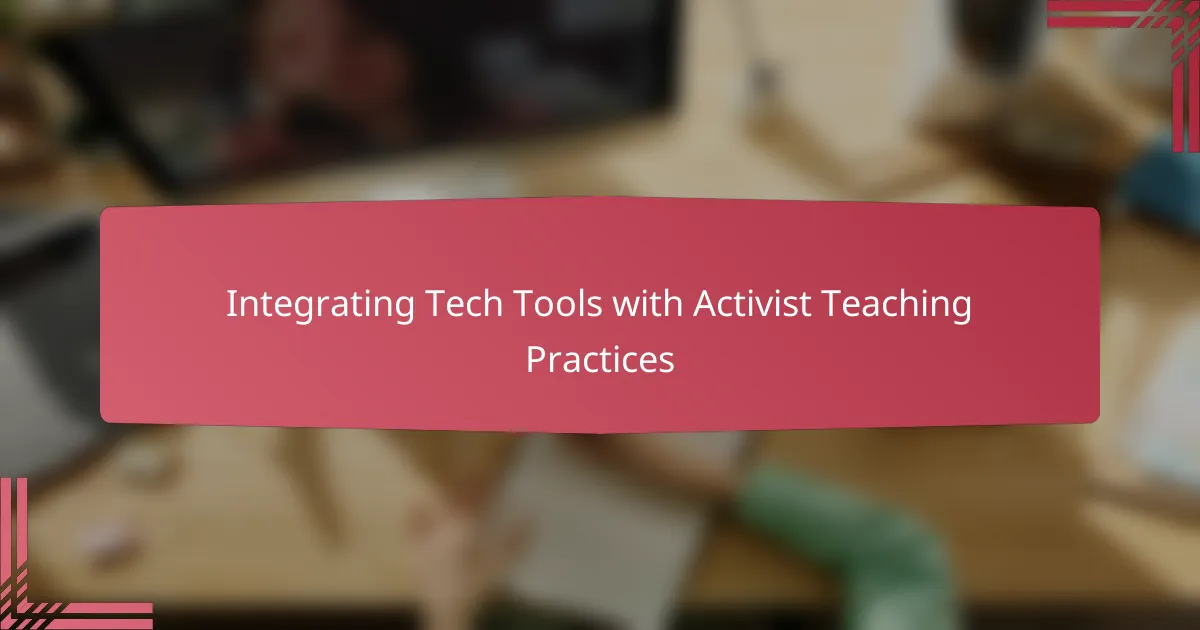
Integrating Tech Tools with Activist Teaching Practices
Integrating tech tools with activist teaching practices felt like weaving two powerful threads into the fabric of my lessons. I discovered that platforms like Flipgrid not only facilitated student expression but also elevated marginalized voices by enabling storytelling in multiple formats. Have you ever thought about how video responses or digital storytelling might shift the classroom dynamics toward more equitable participation?
At times, I wondered if relying on technology could dilute the authenticity of activist work. Yet, tools like collaborative whiteboards and real-time polling actually deepened critical conversations, allowing students to challenge assumptions collectively—even when we were miles apart. Doesn’t the immediacy of these interactions help sustain the urgency and passion essential to activism?
One moment that really stuck with me was when students used a shared document to crowdsource a list of community issues they cared about. Watching their ideas merge and evolve in real time showed me that tech isn’t just a medium; it’s a space for solidarity and action. How often do we pause to reflect on the ways digital tools can transform activism from isolated acts into collective movements?
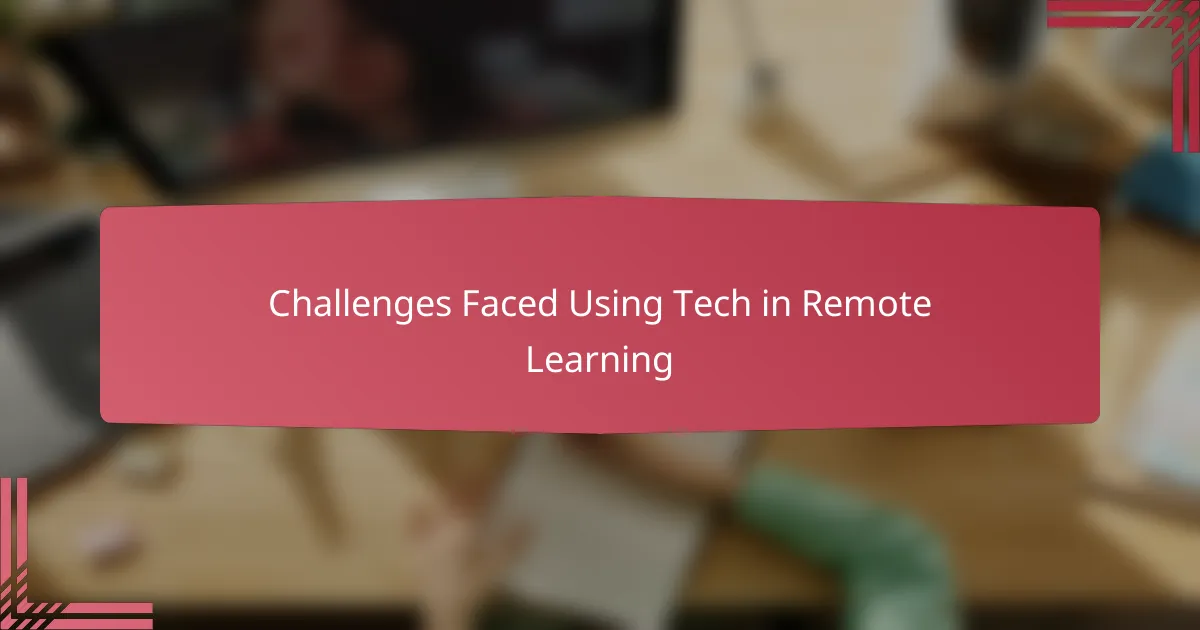
Challenges Faced Using Tech in Remote Learning
One of the biggest challenges I faced was the inconsistent internet access among my students. It was heartbreaking to see some kids struggle just to stay connected or submit assignments because their connection kept dropping. Have you ever had to pause a lesson repeatedly, waiting for someone to rejoin, knowing it breaks the flow and affects everyone’s focus?
Another difficulty was the steep learning curve—not just for me but for my students too. Navigating multiple platforms sometimes felt like juggling, and I could sense the frustration when tech glitches interrupted a meaningful discussion. How often do we underestimate the time and patience needed to master these tools, especially when emotions are already high during remote learning?
Finally, I noticed how screen fatigue weighed heavily on everyone. Long sessions staring at a digital interface drained energy and diminished engagement, which made it harder to sustain the passionate conversations essential for activist teaching. Can technology truly replace the vibrancy of in-person interaction, or are we still searching for that balance?
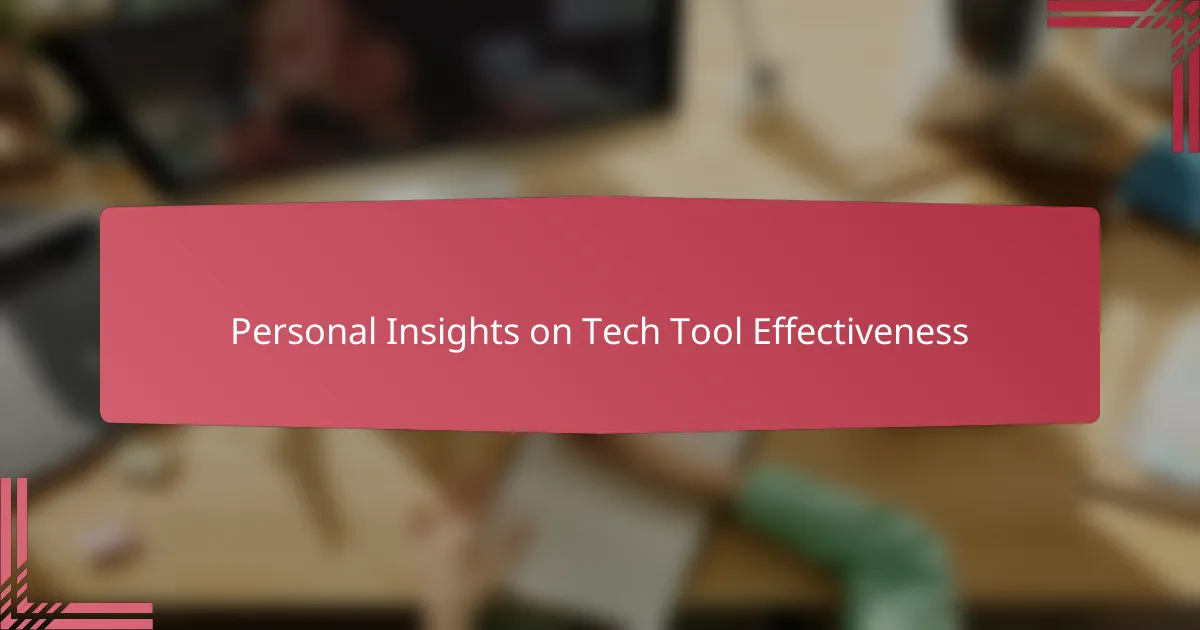
Personal Insights on Tech Tool Effectiveness
I found that tech tools often revealed their true effectiveness in moments I least expected—like when a shy student finally shared their thoughts through a chat function, breaking their silence in a way speaking aloud never did. Have you noticed how these small shifts can change classroom dynamics entirely? For me, it was a reminder that technology can amplify voices that might otherwise go unheard.
At the same time, I quickly learned that effectiveness isn’t just about features but about how intuitively the tool fits into our teaching style. Some platforms felt clunky, hindering the flow of discussion, while others seamlessly encouraged interaction, making me realize that ease of use directly impacts engagement. Isn’t it fascinating how sometimes less flashy tools serve our purposes better than the latest shiny apps?
One striking insight I gathered was that the most effective tech tools were those that invited reflection and critical thinking rather than passive consumption. When students used shared documents or discussion forums to collaboratively explore social issues, I saw authentic learning happening—an experience no prerecorded video could replicate. Doesn’t that underline the importance of intentional tech use in activist education?